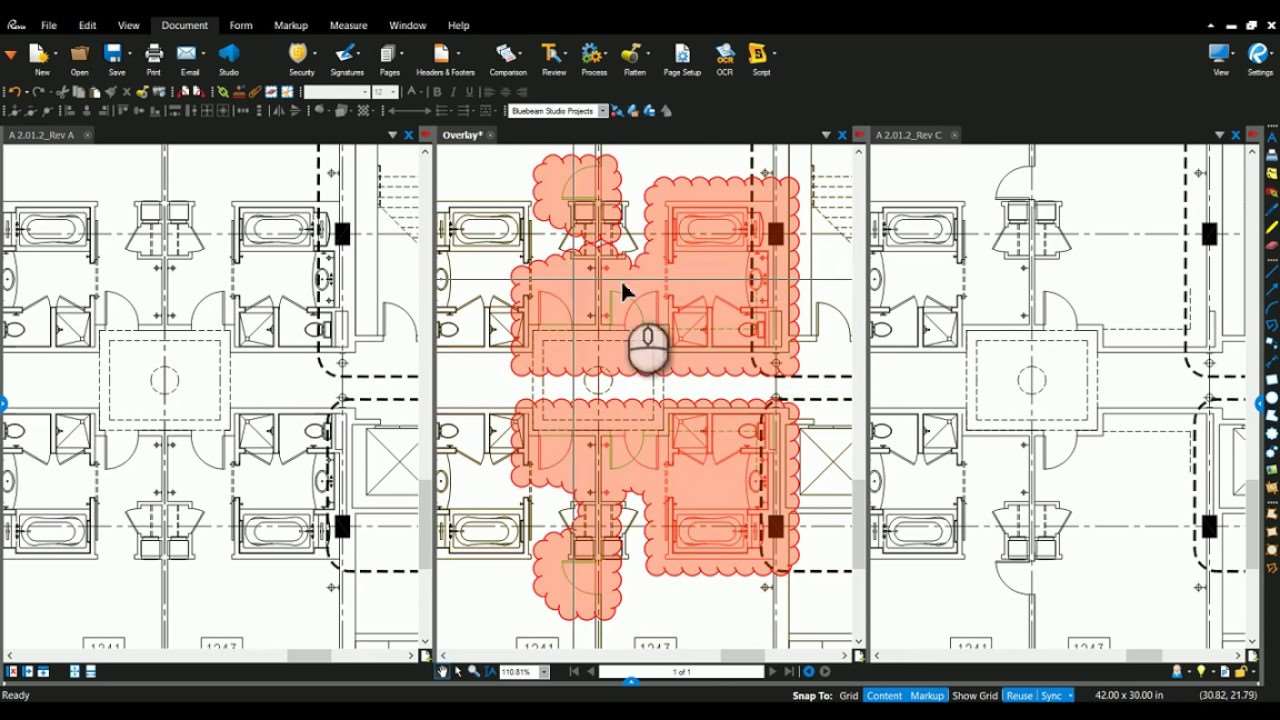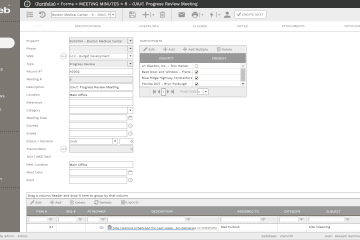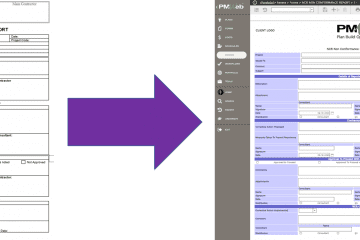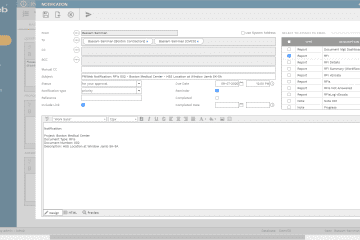In construction projects, there is always the requirement to maintain a history of all drawings to see what has changed over the evolution of each drawing and why it was changed. Maintaining the history of the drawing provides the ability to go back to a previous version when something was changed inadvertently. In some instances, the project team may want to go back to a previous revision to be able to work on the exact drawing or document that was provided to the project owner, contractor, or vendor.
For most construction projects, versions will be limited to drawing and document deliverables before they are formally approved by the project owner or by his authorized agent engineering consultant. Those usually include the issued for construction (IFC) drawings and documents, shop drawings, and as-built drawings. Any changes to those deliverables after they are formally approved will be considered revisions. For projects where building information model (BIM) is adopted, those will be LOD 350 for construction documents (issued for construction), LOD 400 for fabrication and assembly (shop drawings), and LOD 500 for as-built.

Documenting and Tracking Versions
In construction projects, versions can be seen as a copy of the file that is different from the previous version but the changes do not represent functional changes of the design that might affect the form, fit, or function. Versions are used to keep the previous designs in case new ideas do not work or do not improve the design or, for the instances, where multiple concepts are presented and the selected concept will not be known until later. Versions are mainly used during the pre-contract phase and while the contract documents are being developed by the engineering consultant.
Using Project Management Information Systems (PMIS) like PMWeb, versions of all drawings as well as other documents can be maintained regardless of the software application used to author the drawing or contract document. Using the PMWeb Document Management repository, all created versions of a drawing or a document will be uploaded into the desired document folder or subfolder. Each modification is maintained as a new version of the file for which the file name remains the same for all versions. The document checkout and check-in commands maintain a track of each drawing or document version. For each uploaded version, PMWeb also allows adding all needed attributes and comments to provide the needed information for the new version.
PMWeb document management repository can also allow showing only the latest version of a drawing or a document within each document folder or subfolder. Of course, all previous versions will remain stored in the PMWeb documents’ database. By selecting this option, all previous drawings or document versions disappear. The previous versions can be easily restored by reselecting the option of showing all versions for that document folder.
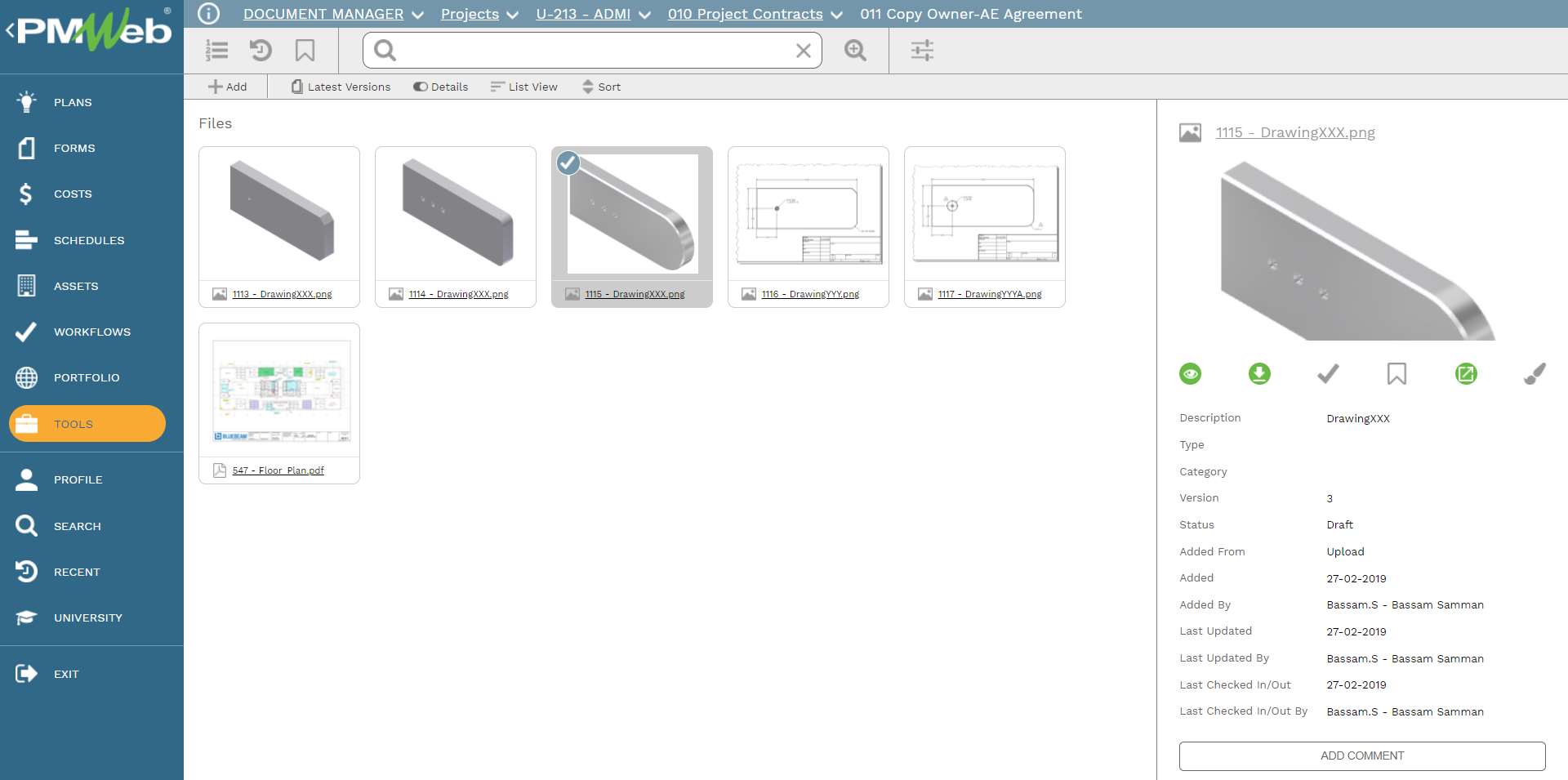
Documenting and Tracking Versions
Webster’s dictionary describes a “revision” as the act of revising, which is to make a new, amended, improved, or up-to- date version.
The revised drawing or any other contract document is a revision that is typically created when modifications are done after the drawing has been formally released to the contractor. In most cases, the revision represents a modification to the document such that the document or design remains interchangeable with the previous revision. Likewise, if the modification changes the data so that it is no longer interchangeable with the previous revision, a new file will be created.
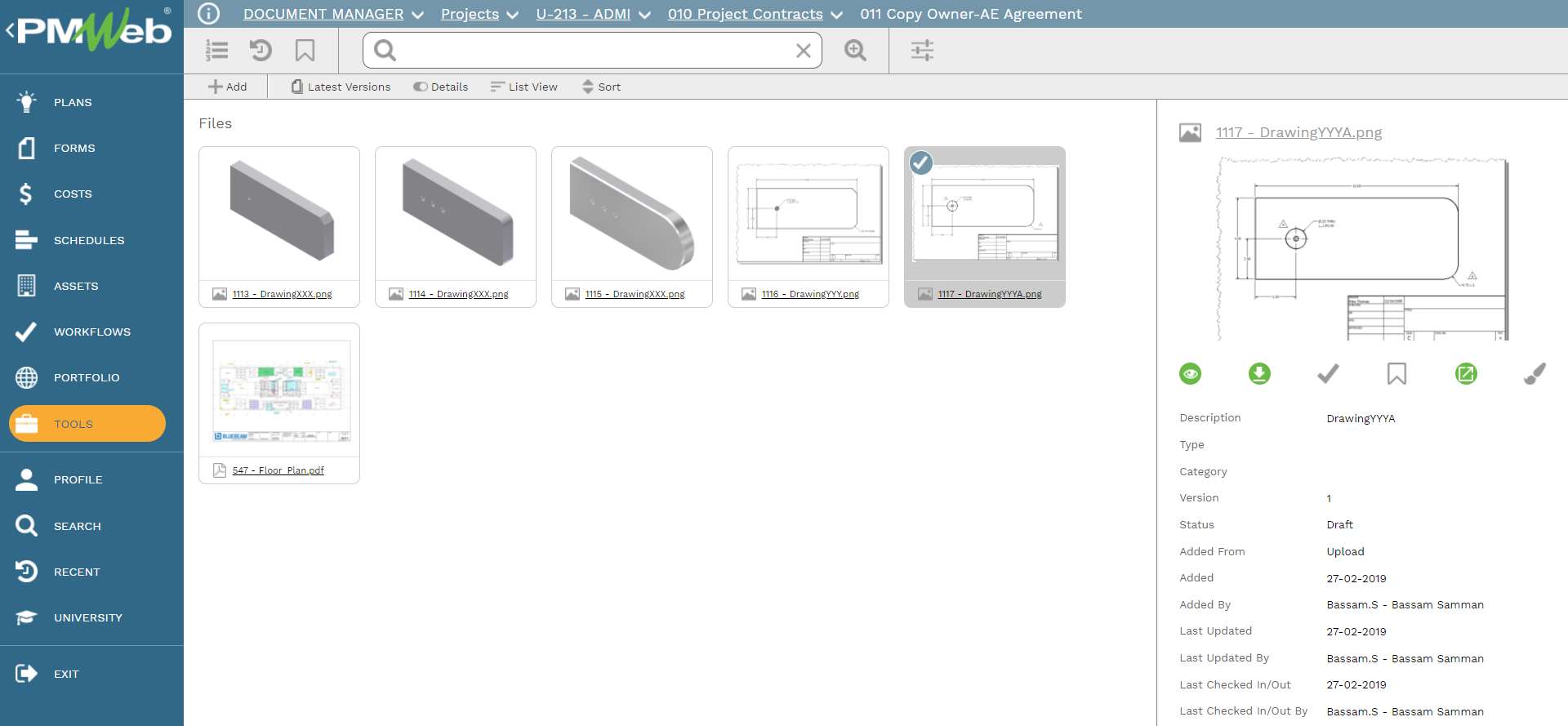
The revised drawing revisions will be identified by incrementing the document’s associated revision number or letter. For example, the first drawing number will be “PV-7E-001” while the second revision will be “PV-7E-001-A” where the “A” indicates the new revision. Sometimes, the revision field could be labeled as “RN” for a partially revised drawing or “XN” for a revised drawing. In both cases, the “N” is a sequential number for the number of revisions made on the drawing. For example, this could be “R1, R2, R3, X1, X2, X3, etc.”.
In construction projects, revisions to the formally approved contract documents could result in change orders that could have cost and/or time implications. In addition, all contract document revisions must be maintained as they might have an impact on the issued or to be issued building permits. The PMWeb Drawing List module maintains the details of all issued drawings and document revisions. For each revision, PMWeb allows attaching the relevant drawing or document revision, as well as capturing all relevant details and notes for this revision.
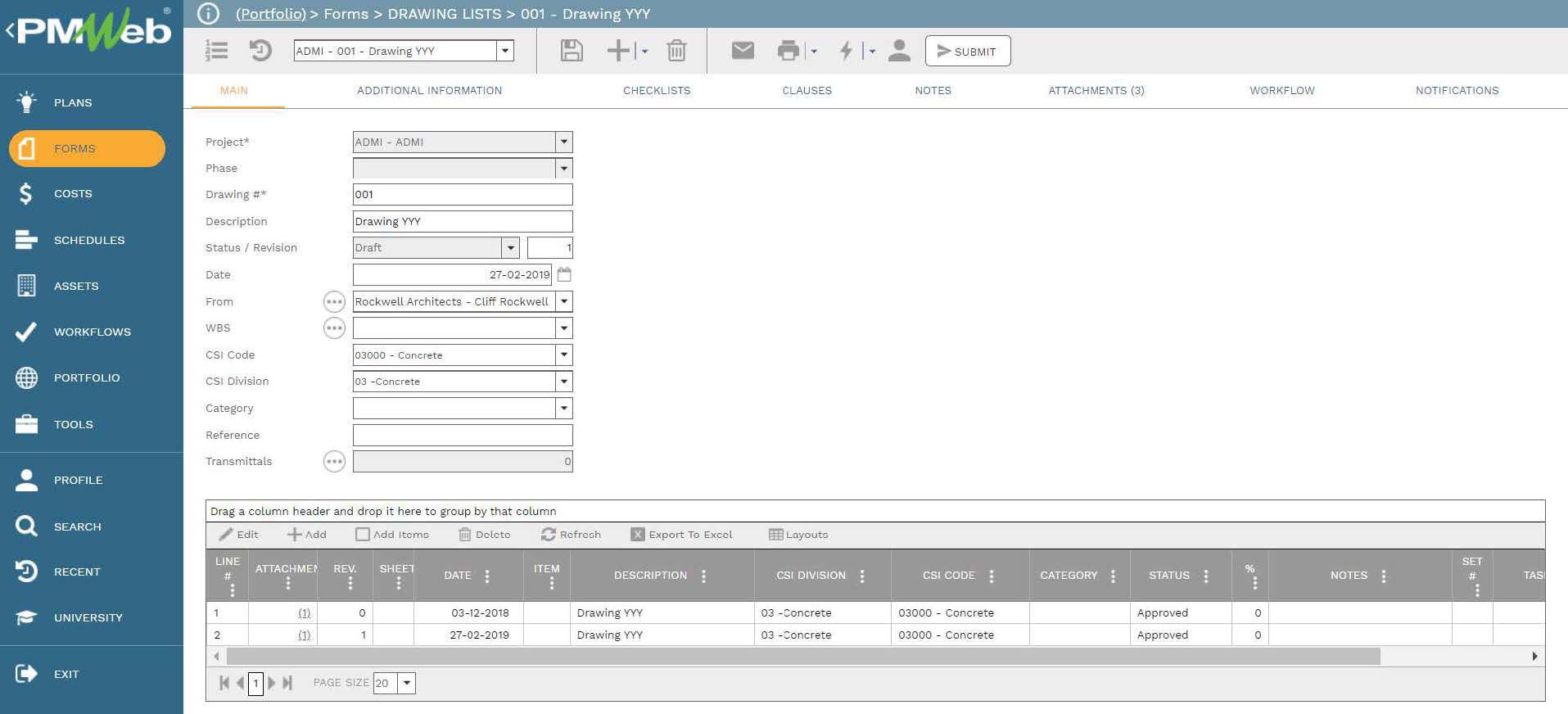
Using advanced drawing markup and comparison applications like Bluebeam Revu, the project team can use Bluebeam Revu to detect and view changes between the two drawing revisions (in PDF file format). By using the PMWeb and Bluebeam Revu integration, all remarks and a list of changes made to the drawings can be imported into the PMWeb Bluebeam Markups module. This enables maintaining a single repository of all drawings changes as well as monitoring, tracking, and reporting on those changes.
